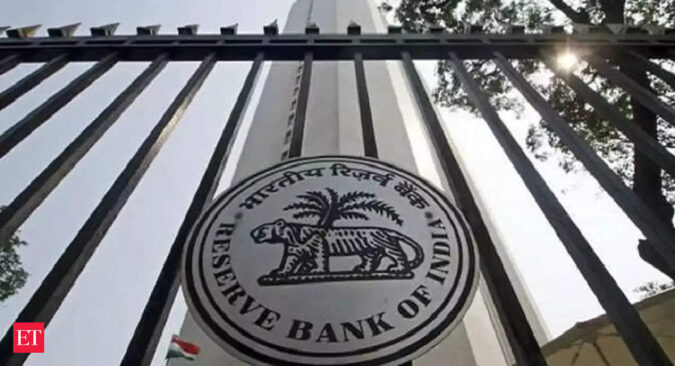The Reserve Bank of India has cut inflation aim to 5.1% from 5.2% forecast in April policy. The central bank today also held the benchmark rate steady for a second straight time at 6.5%, while its also remained focused on withdrawal of accommodation.
“The pace of monetary tightening has slowed in recent months, but uncertainty remains on its future trajectory as inflation continues to rule above targets across the world,” RBI Governor and MPC Chair Shaktikanta Das said while announcing the policy decisions. “(For India) Close and continued vigil on the evolving inflation outlook is absolutely necessary, especially as the monsoon outlook and the impact of El Nino remain uncertain.”
Inflation is expected to remain above the central bank’s 4% target in 2023-2024, Das added.
In a post-policy media briefing, Das said the central bank’s target and endeavor is to see inflation aligns with the mandated target on a durable basis and not one off basis. He was responding to a question if RBI will cut rates if inflation hits 4%.
The governor also said geopolitical tensions, uncertainties around the monsoon and international commodity prices, especially sugar, rice and crude oil, and volatility in global financial markets pose upside risks to inflation.The central bank now sees inflation for Q1, Q2, Q3 and Q4 at 4.6%, 5.2%, 5.4% and 5.2%, respectively. In April policy, the central bank had forecast Q1 inflation at 5.1%, Q2 at 5.4%, Q3 at 5.4% and Q4 at 5.2%.The Mint street and its boss had earlier said they expect inflation to ease to 5% by April to June.
“A durable disinflation in the core component would be critical for a sustained alignment of the headline inflation with the target,” Das said.
For the last fiscal year, inflation was pegged at 6.5%.
India’s consumer price inflation (CPI) eased to an 18-month low of 4.7% in April, from 5.66% in the previous month, largely due to a moderation in food prices, which accounts for nearly half of the overall consumer price basket. The RBI expects the next print of retail inflation to be lower than 4.7 per cent.
However, Das, who had earlier said, the central bank will keep ‘Arjuna’s eyes’ on price pressure to bring the inflation print back within the tolerance ceiling of 6% and then to the 4% target, has in recent days said India’s fight against inflation is not over and there is no room for complacency.
Inflation data for May is due on June 12. The country’s retail inflation was closest to the 4%-mark last in January 2021 at 4.06%. Consumer prices in India had surged to an eight-year high of 7.80% in April 2022.
All categories of inflation witnessed easing pressure and core inflation moderated to 5.1% in April, Das said.
India’s federal weather office has predicted a ‘normal’ monsoon this year, which is key for the country’s crop production and to keep food prices in check.
The forecast of a normal south-west monsoon by the India Meteorological Department (IMD) augurs well for the kharif crops, Das said today. Uncertainties, however, remain on the spatial and temporal distribution of monsoon and on the interplay between El Nino and the Indian Ocean Dipole, he added.
In the April policy, the RBI had cut its FY23 inflation forecast. The RBI had said back then that cost conditions have somewhat eased, but adverse climatic conditions are a risk to future inflation trajectory while there was a need to monitor the rising uncertainty in international financial markets and imported inflation pressures.
In line with the global trend of monetary policy tightening to cool off inflation, the RBI has since May hiked the key repo rate — the rate at which the central bank of a country lends money to commercial banks — by 250 basis points in six instances before today’s rate hike. However in April policy the central bank maintained a status quo.
This time most economists were expecting the central bank to hold rates, as inflation has moderated well into the mandated tolerance zone that indicated the effectiveness of previous policy rate actions.
